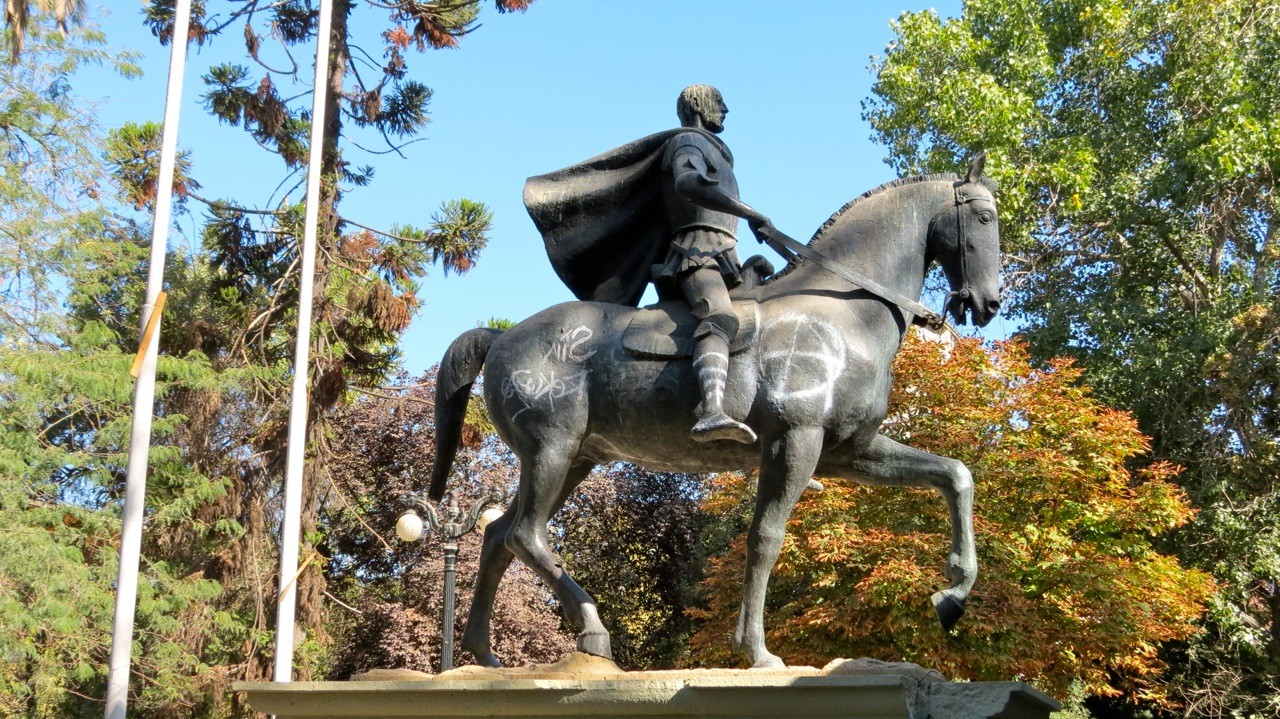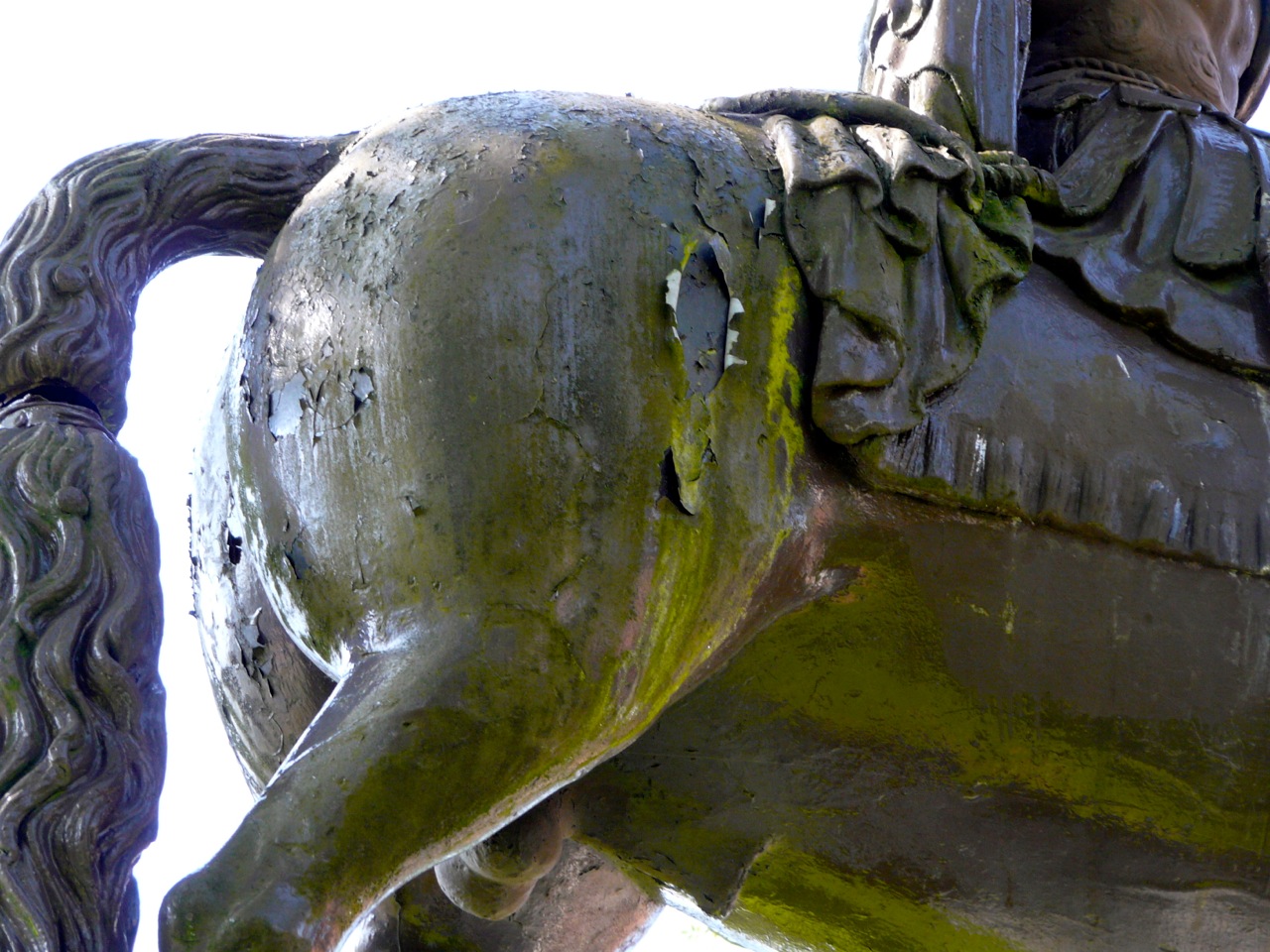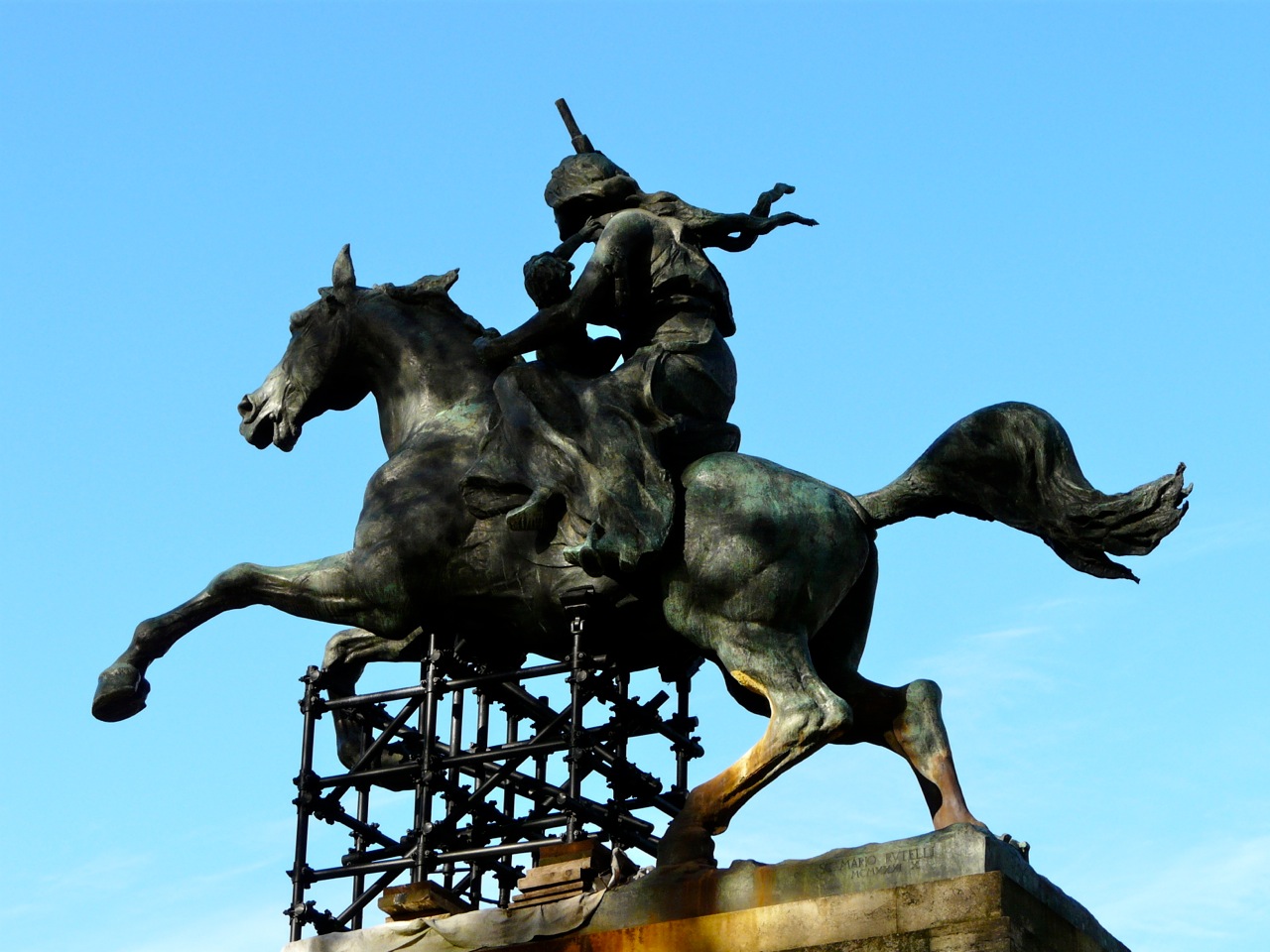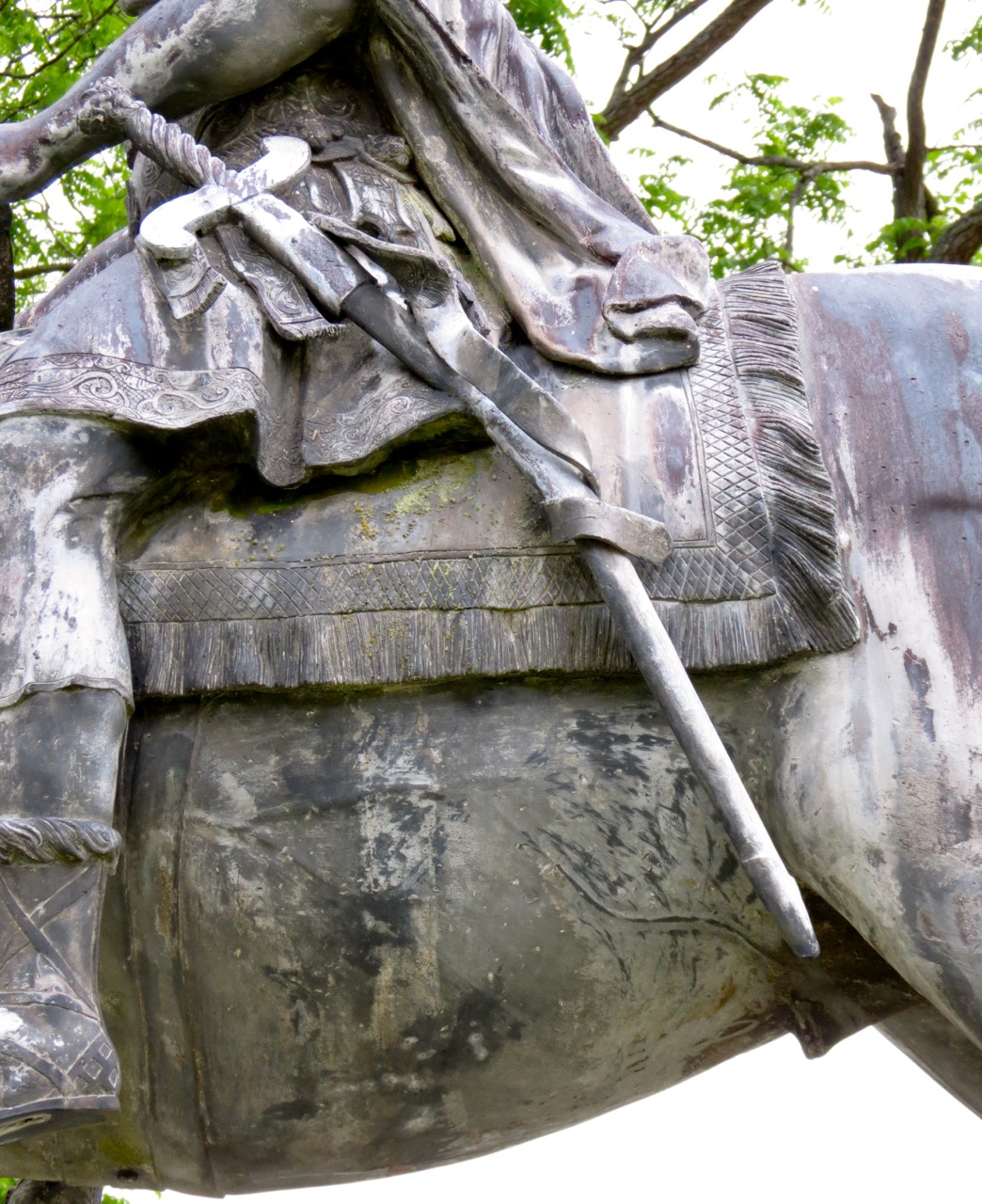Neglected statues
Many equestrian statues may have survived the ages, but often no more than just survived, if one takes a closer look at their condition.
The threats to the statues are numerous. I have mentioned the most important in ……: revolutions, wars, independency and changes of leadership. But there are more, and equally serious, threats. Air pollution, vandalism and pigeons, all in combination with the indifference of local authorities, are nowadays other major dangers.
………………..In New York I saw an example of how damage by pigeons can be prevented:. Sharp pins on the statue of Roosevelt by Fraser make it unattractive, if not impossible for the pigeons to sit on the statue. However, the pins are visible and from an aesthetic point of view unattractive.
…………….Has the solution for this pigeon-problem to be found in Spain? The statue of Charles III in Madrid had to be ‘restored’ already six years after its erection in 1994 because of the many pigeons. Use was made of this restoration to place inside the statue a sensor.This emits a sound that keeps the pigeons away. Until now this had a positive effect.
………………Unfortunately I can give many examples of neglected statues. The Jeanne d’Arc by Dubois in Washington, a gift of the French women for the American women is rusty and misses her sword. Bullet holes from 1945 can still be seen in the statue of Wilhelm I in Nürnberg. The same is true for to the statue of Wilhelm II in Cologne. The William III statue in Glasgow, dating from 1735, looks close to a breakdown. George III in Liverpool (1822) is rusty, as well as William III in Petersfield (1757). A dreary list, that that can be made much longer. 
………………………The beautiful statue of the Duke of Wellington by Marochetti in Glasgow is frequently capped with a traffic cone, representing the ‘humour’ of the local population. It is sad to notice that the local authorities do not discourage this vandalism. On the contrary, the coned statue is sold as an icon and tourist attraction.
…………………The painting of the horse’s testicles is done in more places. I saw it in Toronto (Edward VII), Dortmund (Wilhelm I), Pavia (Regisole) and Worcester MA (Devens). Red is the favourite colour to be used. 

















